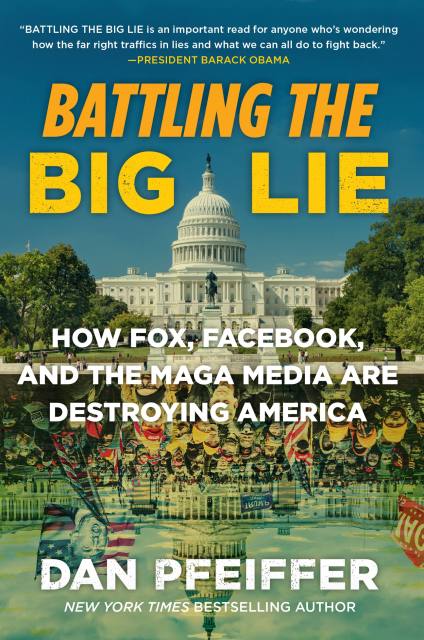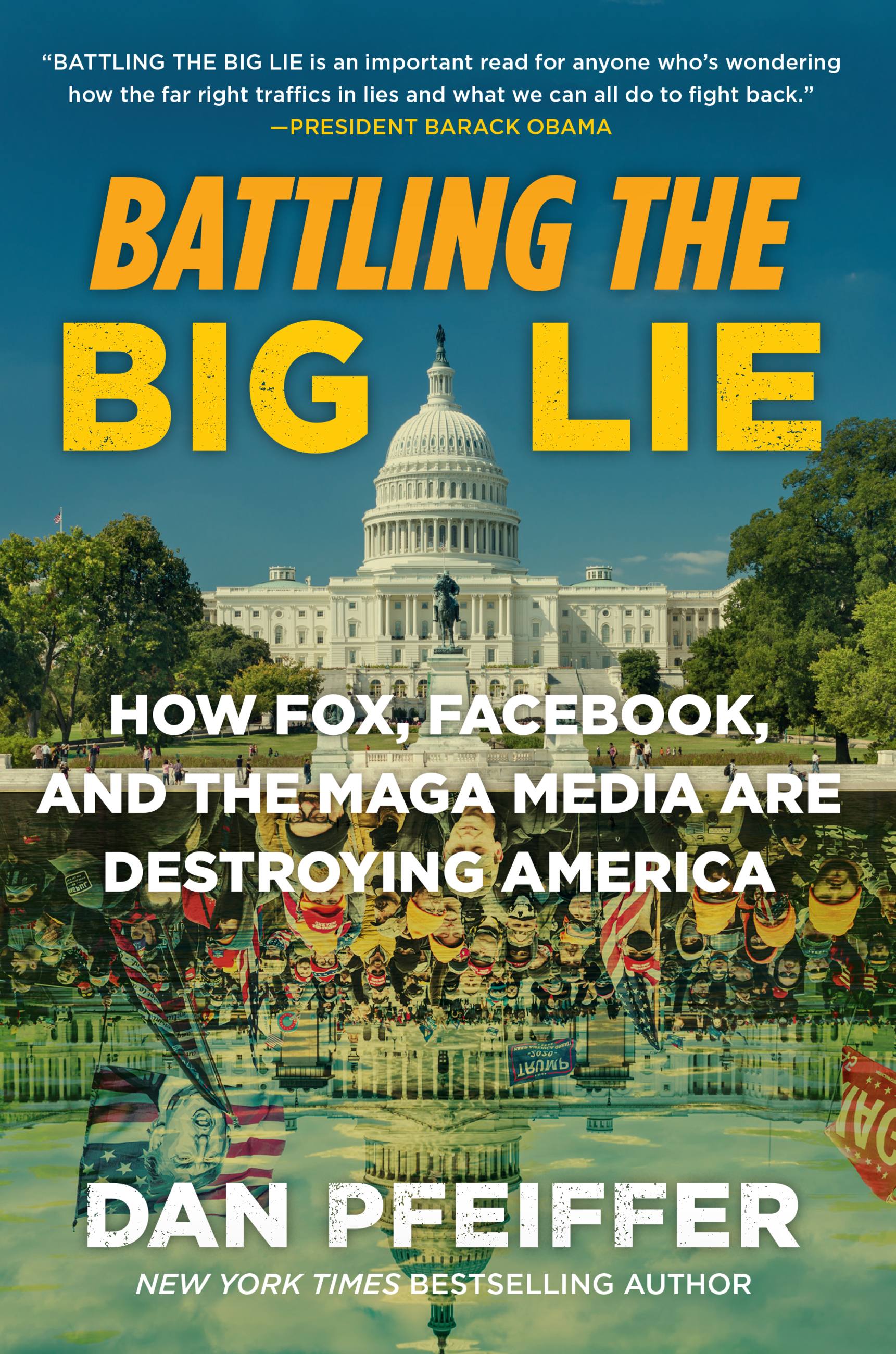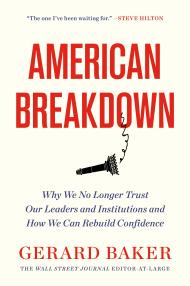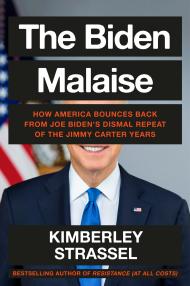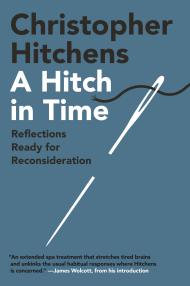Promotion
Use code BEST25 for 25% off storewide. Make sure to order by 11:59am, 12/12 for holiday delivery!
By clicking “Accept,” you agree to the use of cookies and similar technologies on your device as set forth in our Cookie Policy and our Privacy Policy. Please note that certain cookies are essential for this website to function properly and do not require user consent to be deployed.
Battling the Big Lie
How Fox, Facebook, and the MAGA Media Are Destroying America
Contributors
By Dan Pfeiffer
Formats and Prices
- On Sale
- Jun 7, 2022
- Page Count
- 304 pages
- Publisher
- Twelve
- ISBN-13
- 9781538707999
Price
$11.99Price
$15.99 CADFormat
Format:
- ebook $11.99 $15.99 CAD
- Audiobook Download (Unabridged) $24.99
- Trade Paperback $18.99 $23.99 CAD
This item is a preorder. Your payment method will be charged immediately, and the product is expected to ship on or around June 7, 2022. This date is subject to change due to shipping delays beyond our control.
Buy from Other Retailers:
THE INSTANT #1 NEW YORK TIMES BESTSELLER OF YES WE (STILL) CAN! AND CO-HOST OF POD SAVE AMERICA.
BATTLING THE BIG LIE explains how to combat political disinformation and dangerous lies of the right-wing propaganda machine.
In BATTLING THE BIG LIE, bestselling author Dan Pfeiffer dissects how the right-wing built a massive, billionaire-funded disinformation machine powerful enough to bend reality and nearly steal the 2020 election. From the perspective of someone who has spent decades on the front lines of politics and media, Pfeiffer lays out how the right-wing media apparatus works, where it came from, and what progressives can do to fight back against disinformation.
Over a period of decades, the right-wing has built a massive media apparatus that is weaponizing misinformation and spreading conspiracy theories for political purposes. This “MAGA Megaphone” that is personified by Fox News and fueled by Facebook is waging war on the very idea of objective truth—and they are winning. This disinformation campaign is how Donald Trump won in 2016, almost won in 2020, and why the United States is incapable of addressing problems from COVID-19 to climate change.
Pfeiffer explains how and why the Republicans have come to depend on culture war grievances, crackpot conspiracies, and truly sinister propaganda as their primary political strategies, including:
- Republican efforts from Roger Ailes to Steve Bannon and Donald Trump to sow distrust while exploiting the media’s biases and the Democratic Party’s blind spots.
- The optimization of Facebook as the ultimate carrier of Trumpist messaging.
- Educating the Left to stop clutching pearls and start “fighting fire with fire.”
- How to fight back against the trolls spreading disinformation and hate on the Internet.
-
"The United States is in the throes of a disinformation epidemic that is being fueled by right-wing media personalities, unchecked social media companies, and extremist politicians – posing a clear and present threat to our democracy. In his book, BATTLING THE BIG LIE, Dan has demonstrated a sharp understanding of how we got here, while lifting up some of the most promising efforts leading in this fight and offering a roadmap for how we can all play a role in countering disinformation where it spreads – to quite literally save our democracy. Anyone who is concerned about the impact disinformation is having on society today should read this book."Tara McGowan, Founder of Good Information Inc. and Courier Newsroom
-
“Our real lives and online lives are so confusing and frankly at times depressing that we want to just tune out but we know we can’t! Too much is at stake. In BATTLING THE BIG LIE which is part guide, part battle plan and a little bit of therapy, Pfeiffer helps breakdown how and why we got here, and gives us the tools to fight back against disinformation, talk to people we disagree with and help create an environment where progressive media can thrive. A vital read going into our upcoming elections."Alyssa Mastromonaco, New York Times bestselling author and co-host of Crooked Media’s Hysteria podcast
-
“Democracy will not survive if truth continues to be a casualty of propaganda and disinformation. Battling the Big Lie is an enlightening, at times enraging, and always entertaining guide through the recent history of our politics and media, drawing on Dan Pfeiffer’s unparalleled experience. Read this book if you want to understand what is happening in American politics, why it is happening, and what you can do about it.”Ben Rhodes, former Deputy National Security Advisor and author of After the Fall
-
"This is the book that progressives and Americans generally need to better understand the rise and resilience of Donald Trump and the Trump Republican Party. It’s not about him, as much as Trump wants everything to be about him, but about the right-wing media ecosystem of disinformation that’s sustained Trumpism. Dan Pfeiffer understands that and narrates it here as only a longtime practitioner of political communications can, and he delivers some yucks along with the hard and often depressing truths."Jackie Calmes, Los Angeles Times columnist and author of Dissent
-
“Dan's most important book to date, BATTLING THE BIG LIE offers concrete solutions to one of the greatest challenges of our time - combatting disinformation and its corrosive impact on democracy. Whether you are a concerned citizen newly worried about the state of democracy or a political professional who has lamented the right-wing's devastatingly effective media machine for decades, BATTLING THE BIG LIE delivers an empowering, modern blueprint for fighting back.”Jennifer Palmieri, Co-host of Showtime's The Circus and author of #1 New York Times bestseller Dear Madam President
-
“A new playbook for Democratic messaging with a bite and a sting.”Kirkus Review
-
“The author does detail, with bracing clarity, just how effective right-wing messaging has been compared to that of the left—see the Big Lie—and he offers advice for mainstream media in advance of upcoming elections… Good advice for any side in a functioning democracy.”Booklist Reviews
Newsletter Signup
By clicking ‘Sign Up,’ I acknowledge that I have read and agree to Hachette Book Group’s Privacy Policy and Terms of Use
